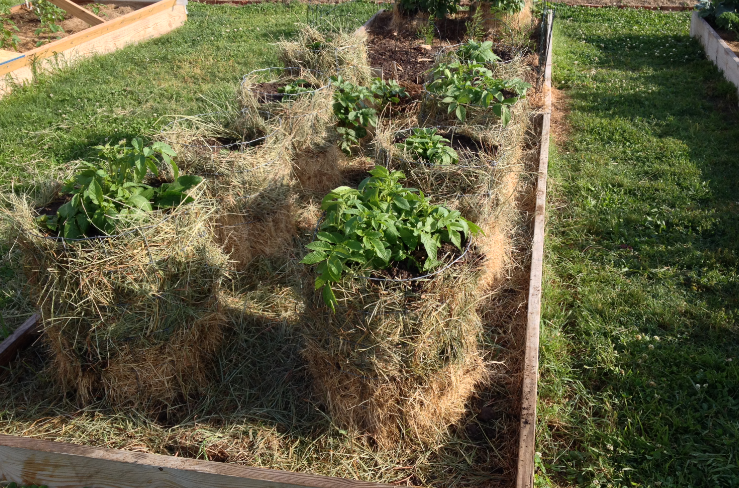There are two ways to find out whether potato towers really work. One is to search for real studies that compare potato towers with different types of developing potatoes and the other is to try to understand how potatoes actually grow.
What is a potato tower?
Usually, the plants are grown for a few weeks and afterward soil is hilled up around the plant. The tubers are developing in this hill, which is normally around six inches high.
How would you make a greater hill in order to have bigger harvest? There are a few different ways to do this. You can place tires around the plant as it develops and create a vertical tower. Begin with one tire and plant the seed potatoes. As they develop discard the leaves and place another tire around the stem.
You can also utilize a wire mesh to shape a tower, or build a square wooden structure.
These arrangements are structured with the goal that you place the seed tubers in the ground, and afterward as the plant develops, you continue adding soil to make the hill taller and taller. Include additional tires or bits of wood to hold the soil around the plant.
So at the end of the season you’re supposed to have a hill full of potatoes. And here comes the big question…
Do potato towers work?
The fact is that you will harvest potatoes, the question is will you get bigger yield? Potatoes are cool season crops that like cool, moist conditions when tubers are forming. Optimal tuber set takes place with a night temperature of around 55°F (13°C). When night time temperatures exceed 68°F (20°C), tuber growth is reduced, and it stops above 84°F (29°C).
How early and mid-season varieties grow?
At the point when the seed potatoes are secured with soil, they begin making roots and shoots.
Following two or three weeks, rhizomes likewise begin to develop. These are stems that develop for some time and after that form the new potato at their ends. While this is going on the principle stem is becoming taller and making bunches of leaves.
Through photosynthesis, the leaves are making sugars which are sent down to the shaping tubers. In order to get large tubers, the plant needs to grow bunches of leaves.
The late-season varieties grow over a much longer season. These potatoes will make additional rhizomes higher on the stem (one foot above the seed potato).
Reasons why potato towers don’t work
1.Height of potato towers
Most towers end up being three to four feet tall. The hypothesis is that potatoes will be shaped up and down the stem, filling the full height of the tower. The issue is that most gardeners grow early and mid-season potatoes, which only make new potatoes at ground level.
You may think that having tall towers implies that the plant begins making potatoes higher up the stem. In fact, when people who have tried this they dismantle their towers find out that the majority of the rhizomes and potatoes are at or close ground level.
2.Small amount of leaves
In order to keep filling the tower with soil you have to remove leaves from the plant. At the end of the season you have a few leaves at the top of a very long stem that is devoid of leaves. The lack of leaves results in very little food being produced, which in turn results in few or small potatoes.
3.Too many seed potatoes
When you grow potatoes normally-in the ground, they are divided out along a row which are separated from each other. Some tower ideas suggest placing too many seed potatoes in the tower. Such packed conditions don’t enable plants to develop to their maximum capacity and after that don’t create a lot of potatoes.
4.Potatoes need cool soil
Potato towers are simply huge containers that have all the soil over the ground. That implies their soil gets hotter and drier than a similar soil in the ground. Potatoes produce the most tubers when grown in cool and moist conditions. In the event that the soil in the tower gets excessively hot, they will stop making tubers completely.
Growing potatoes in containers
Growing potatoes in containers may appear a similar procedure, yet it is essentially unique. The container is basically used to provide great soil for development. Leaves are not discarded to make a tall hill, so the plant creates a decent yield.
It is a lot simpler to grow potatoes in the ground, however if you don’t have great soil (or enough space), this is absolutely a feasible alternative.
Source: www.gardenmyths.com

